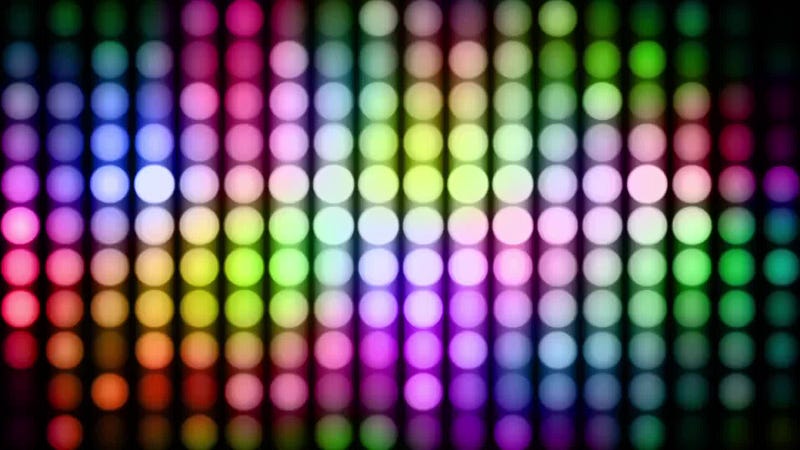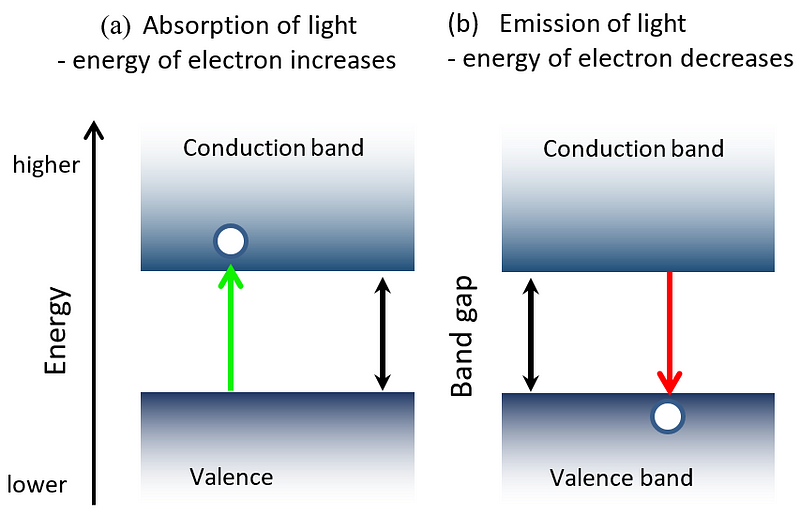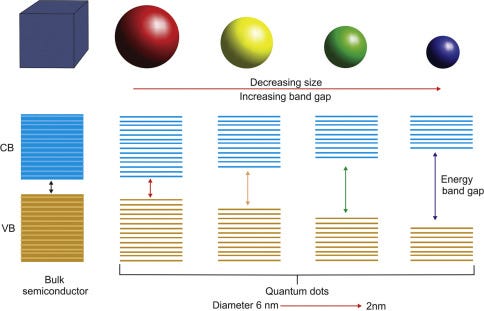Exploring Quantum Physics: The Future of Color TV Technology
Written on
Chapter 1: Introduction to Quantum Dot Technology
Quantum dot (QLED) technology has emerged as a groundbreaking advancement in the television industry. First showcased at the Consumer Electronics Show in Las Vegas in 2015, it quickly became recognized as a leading innovation alongside other technologies like wearables and IoT. TV manufacturers, including giants like Samsung and Sony, have harnessed quantum mechanics to deliver a significant enhancement in picture quality through the incorporation of quantum dots. But what scientific principles underlie this remarkable technology? Let’s delve deeper!
The Science of Quantum Dots
Quantum dots are tiny semiconductor particles, typically ranging from 2 to 10 nanometers in diameter. They stand out from traditional light-emitting diodes (LEDs) by emitting light in sharper, more vibrant colors.

To understand how quantum dots enhance color quality, we first need to examine the light-emitting processes in conventional LED materials.
Section 1.1: How Light is Emitted in Semiconductors
Electrons within a semiconductor reside in various energy states. The highest energy electrons are found in the valence band, while the conduction band holds the next highest energy levels. The gap between these two bands is known as the band gap, which varies based on the material's properties.
When an electron in the valence band receives enough energy, it can jump to the conduction band. As it returns to its original state, it emits light, with the emitted color corresponding to the energy of the band gap. In standard LED technology, applying voltage allows electrons in the conduction band to release energy as light.
Subsection 1.1.1: Quantum Confinement Effect
What differentiates quantum dots from conventional semiconductors? The answer lies in their size. By reducing the size of the semiconductor, you can adjust the emitted light's color by altering the quantum dot's dimensions rather than depending solely on material characteristics.

This phenomenon is referred to as the quantum confinement effect. In larger materials, electrons can move freely. In quantum dots, however, the restricted space forces electrons to behave differently, resulting in increased energy levels between the valence and conduction bands. This allows for precise control over the emitted light’s color by merely modifying the size of the quantum dot.

The resulting light output can vary significantly based on the quantum dot's size, as illustrated by vials of quantum dots fluorescing in different colors.
Section 1.2: The Functionality of QLED Displays
Samsung's QLED (quantum dot light-emitting diode) televisions, introduced in 2017, utilize a blue LED backlight to excite a layer of quantum dots. The electrons in these quantum dots, upon relaxation, emit vivid colors that contribute to the overall image you see on the screen.

Chapter 2: QLED vs. OLED: A Comparative Analysis
How does QLED technology stack up against its closest rival, OLED (organic light-emitting diode)? While QLED is known for superior energy efficiency and sharper color reproduction, OLED has long been recognized for its overall picture quality. This is because OLED technology is emissive, meaning the individual pixels generate light, allowing for true blacks and higher contrast levels.
How a QNED Mini LED TV Uses Quantum Mechanics To Make a Picture - YouTube
The latest advancements in display technology have introduced QD-OLED (quantum dot organic light-emitting diode), which combines the strengths of both QLED and OLED. Launched by Samsung in 2022, QD-OLED displays feature blue OLED pixels divided into three subpixels: blue, red-tuned quantum dots, and green-tuned quantum dots. This setup allows for exceptional brightness and color accuracy without sacrificing contrast.
What the Heck is a Quantum Dot TV? Explained and Clarified! - YouTube
In summary, QD-OLED technology represents the pinnacle of television display innovation, offering the best of both worlds with vibrant colors, impressive brightness, and superior black levels.
Interested in learning more? Check out these articles:
- What Is Nanotechnology and Where Is the Field Today?
- 3 Ways Scientists Can Unlock New Technologies by Working at the Nanoscale
- Want to Make Contact with Aliens? Here’s How to Do It, According to Science.
Citations: